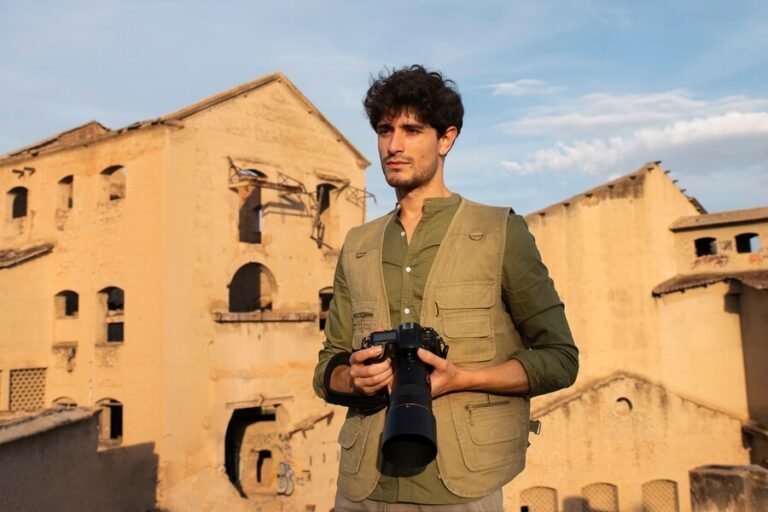Bollywood has a talent for transporting us to a different time and space, and Gangubai Kathiawadi, directed by Sanjay Leela Bhansali, is no exception. Released in 2022, this cinematic masterpiece captivated critics and audiences alike, giving us a glimpse into the life of one of Mumbai’s most intriguing historical figures. But how much of the movie reflects the real story of Gangubai Kathiawadi? And how has this film contributed to the portrayal of women in Bollywood?
This post unravels the history behind Gangubai Kathiawadi, dives into the making of the film, and explores its connection to cultural and historical truths. Whether you’re a Bollywood enthusiast or a history buff, this story offers an intersection of cinema, history, and culture that is nothing short of compelling.
Who Was Gangubai Kathiawadi?
The tale of Gangubai Kathiawadi begins in Kathiawad, Gujarat, where Ganga Harjivandas (later famously known as Gangubai) was born in the 1940s. Hailing from a well-to-do family, Ganga dreamed of becoming an actress in Mumbai. However, her aspirations took a dark turn when she was betrayed by her lover, who sold her into the red-light district of Kamathipura, Mumbai.
Despite this harrowing betrayal, Ganga refused to succumb to a life of despair. Instead, she emerged as Gangubai—a powerful madam in the Kamathipura neighborhood. Renowned for her grit and compassion, Gangubai advocated for the rights of sex workers and orphaned children, earning her the moniker “The Mafia Queen of Mumbai.” Over time, her name became synonymous with resilience and empowerment in a world that sought to silence women like her.
The Real Story Behind Gangubai Kathiawadi
Gangubai’s story is sourced primarily from Hussain Zaidi’s book, Mafia Queens of Mumbai. The book depicts her rise from exploitation to prominence, detailing key events like her interactions with the underworld, her defiance of societal stigma, and her fight for the dignity of marginalized women.
Gangubai reportedly maintained strong ties with Mumbai’s criminal underworld, relying on these connections to protect the women in Kamathipura. She also advocated for the legalization of prostitution to grant sex workers legal rights and protection, a radical stance at that time. One of her most notable moments was her audience with India’s then-Prime Minister, Jawaharlal Nehru, highlighting her influence and determination.
The Making of the Bollywood Film
Bringing Gangubai Kathiawadi’s life to the silver screen was no easy feat. Director Sanjay Leela Bhansali, known for his visually stunning and emotionally charged films, took on the challenge of weaving her story into a compelling narrative.
Casting Choices and Performances
The film stars Alia Bhatt in the titular role, a casting decision that initially raised eyebrows. Many wondered whether Bhatt, often associated with youthful, urban-centric roles, could embody the grit and intensity required to portray Gangubai. However, Alia silenced critics with a stellar performance that balanced vulnerability and strength, earning widespread acclaim and multiple awards.
Bhansali’s Vision
Bhansali’s signature artistic direction shines throughout the movie. From the intricate sets of Kamathipura to the evocative score, every frame is crafted with meticulous detail. The film blends melodrama with realism, striking a balance that keeps the audience gripped while respecting the gravity of its subject matter.
Audience and Industry Impact
Upon its release, Gangubai Kathiawadi struck a chord with audiences globally. The film not only became a critical and commercial success but also reignited discussions about gender, societal norms, and the historical injustices faced by marginalized women. For Bollywood, it set a new benchmark for storytelling about real-life figures.
Cultural and Historical Accuracy Explored
While Gangubai Kathiawadi is steeped in history, Bhansali has made creative choices to adapt Gangubai’s story for the screen. This has led to debates over the film’s historical accuracy and its depiction of real events and people.
What the Film Got Right
The film portrays Gangubai’s resilience and advocacy accurately, highlighting key moments like her leadership in Kamathipura and her meeting with Nehru. The visual recreation of 1960s Mumbai, particularly the bustling streets of Kamathipura, adds an authentic touch, transporting the audience back in time.
What Was Dramatic License?
Some critics argue that the film romanticizes certain aspects of Gangubai’s life, muting the harsh realities of her circumstances. The narrative occasionally veers into fictional territory to heighten dramatic appeal, which is common in Bollywood biopics. Even so, these creative liberties don’t detract from the core essence of her story—her indomitable spirit.
Portrayal of Women in Bollywood Through Gangubai Kathiawadi
Bollywood has a history of reducing female characters to love interests or accessories to male-centric narratives. However, Gangubai Kathiawadi challenges these conventions by placing a complex woman at the center of the story.
A Step Toward Empowerment
Gangubai is depicted as a flawed yet fierce leader who fights for the underprivileged and reclaims her agency in a patriarchal society. This nuanced representation provides a refreshing contrast to the one-dimensional portrayals of women often seen in Indian cinema.
Broader Implications for Women in Bollywood
The film’s success signals a growing appetite for stories that highlight strong female characters. It also opens the door for directors to explore narratives about women who exist outside traditional norms—breaking stereotypes and inspiring audiences.
Reflecting on Gangubai Kathiawadi’s Legacy
At its heart, Gangubai Kathiawadi is a tale of resilience, empowerment, and defiance against oppression. It brings to life the struggles of a marginalized woman who refused to be defined by her circumstances, creating ripples that continue to inspire.
For Bollywood enthusiasts, the movie offers an intoxicating blend of drama, history, and art. For history buffs, it serves as a thought-provoking exploration of a real-life figure whose story was waiting to be told.

